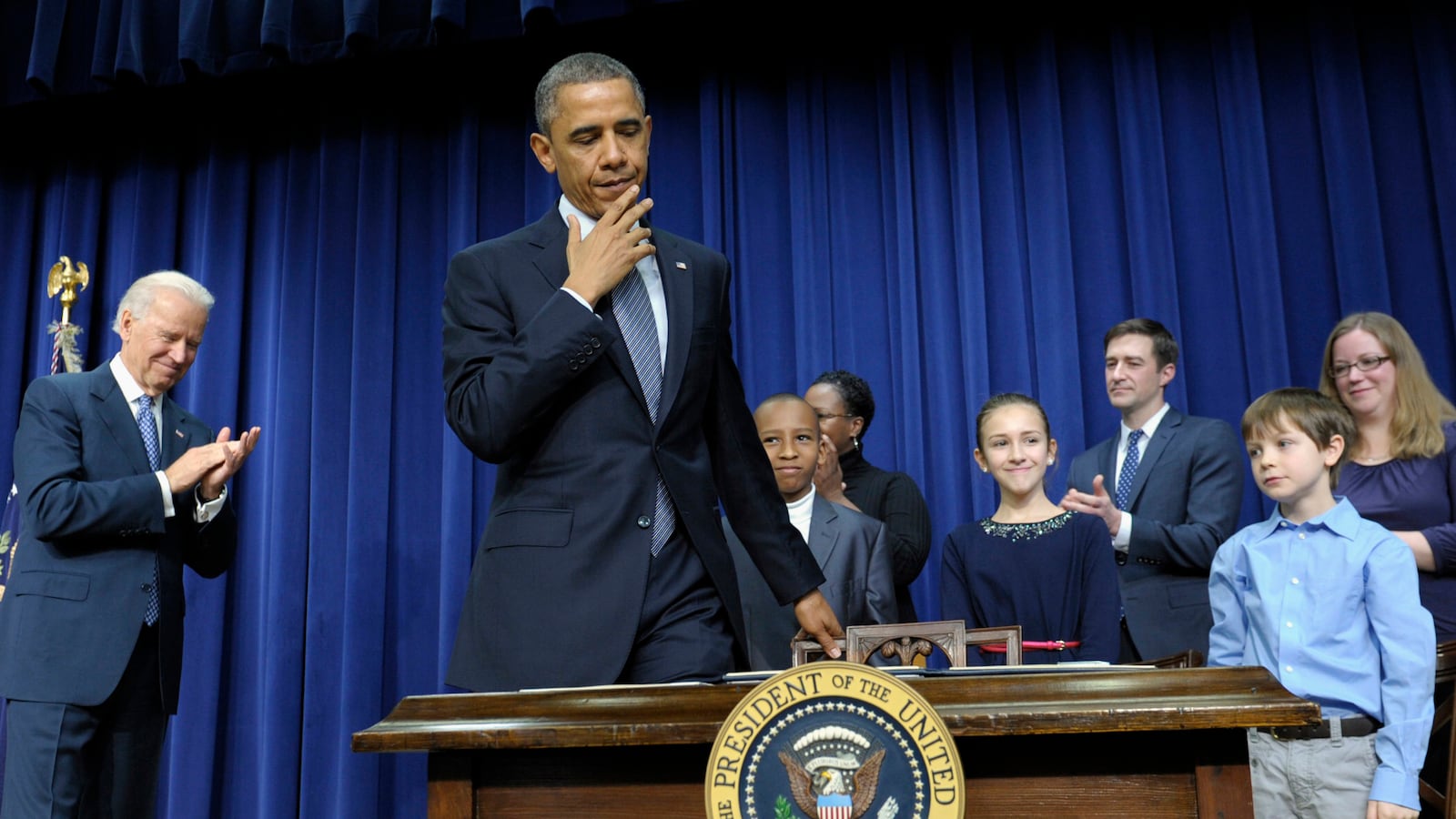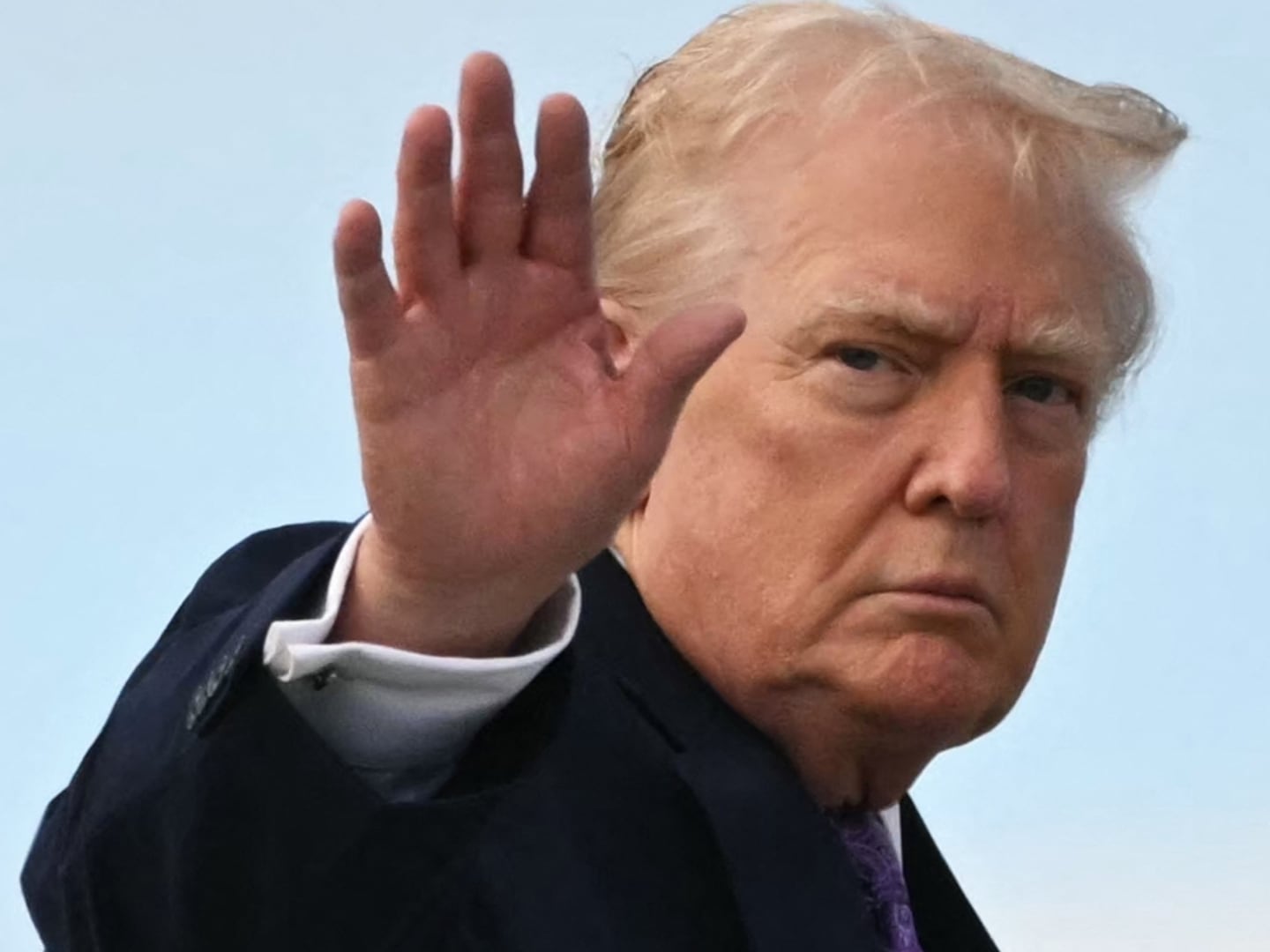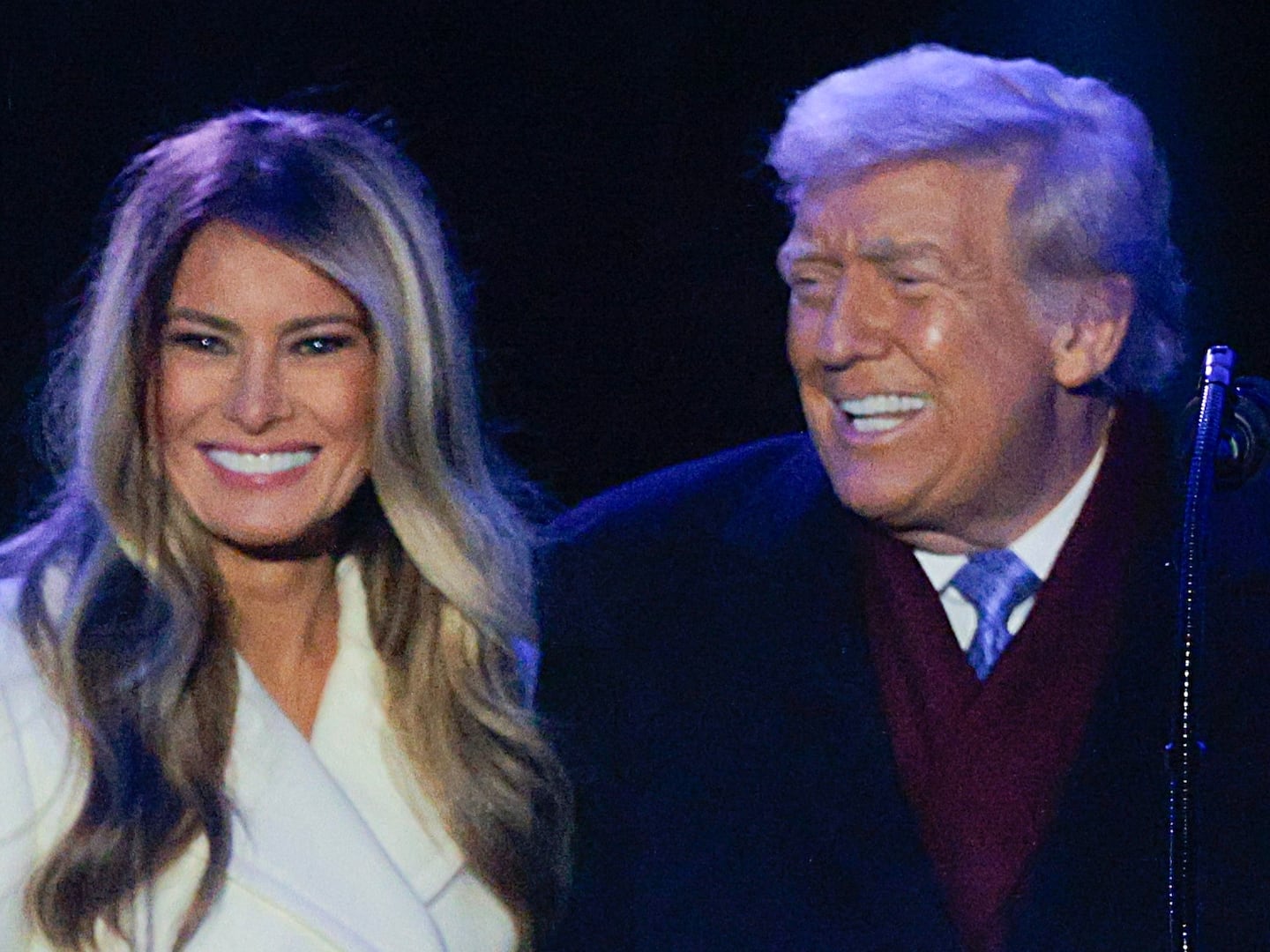President Obama mixed a powerful appeal for curbing gun violence with visible executive action to convey his determination to honor the memory of the victims of the Sandy Hook school massacre.

In the month since 20 first-graders were gunned down, shocking the nation’s conscience, 900 more Americans have reportedly died at the end of a gun, Obama said. With four children on stage with him at the White House who had written letters urging he take action, Obama unveiled a specific set of proposals and vowed that “in the days ahead I intend to use whatever weight this office holds to make them a reality.”
He said he would direct the Centers for Disease Control to study gun violence, which sounds benign enough until you realize the National Rifle Association has systematically worked to subvert such research. “We don’t benefit from ignorance. We don’t benefit from not knowing the science of this epidemic of violence,” Obama said. And while he could take a number of other actions on his own, like requiring more information sharing within the federal government, beefing up the prosecution of gun violations, and tightening existing laws, he acknowledged that it is not a substitute for congressional action.
Obama wants Congress to pass a universal background check on gun buyers and to restore the ban that lapsed in 2004 on assault weapons along with a 10-round limit for magazines. In the Aurora, Colo., theater shooting, 70 people were shot and 12 killed in a matter of minutes because bullets could be pumped out with such speed. He noted that President Reagan in 1994 wrote to Congress “urging them to listen to the American people and put a ban on military-style assault weapons.” He urged the Senate to confirm acting director B. Todd Jones to head the Bureau of Alcohol, Tobacco, and Firearms, which has not had a director since 2006 when Congress at the behest of the NRA made it a confirmable position. No one since has passed muster with gun advocates, crippling the agency’s effectiveness.
The assault-weapons ban is the symbolic centerpiece of the proposed legislation because it is the weapon of choice in mass killings. It is also given low odds for success in a Congress where half the members have an A rating from the NRA and House Republicans have shown no interest in moving the ban. Democratic Senate leader Harry Reid, a gun enthusiast, is loathe to have his members in rural states take a tough vote for the president and then have the House scuttle any legislation.
The consensus in Washington is that the ban is doomed. Jim Kessler with Third Way, a centrist Democratic group, calls it “the heaviest lift” with a limited impact on crime since anyone who can’t buy an assault weapon can buy a handgun. He says the package shouldn’t be judged by whether the ban is passed, and that in his view, getting the background check would be a 10 on a scale of 1 to 10, with the assault weapons ban a 3.
Kessler attended the White House event Tuesday, and among the elected officials he spotted in the audience was Democratic Rep. John Dingell, a longtime defender of gun rights and the NRA. “It’s really important you’re here,” he told Dingell. “If anything gets done, it’s because you’re in the room.” The Michigan lawmaker helped make the 1994 ban a reality, and gun safety advocates envision him acting once again as an emissary to the NRA. Dingel responded, “I know, I know. I want to get something done.”
“You can love guns and like this package if you’re honest with yourself,” says Kessler. Gun enthusiasts who buy from licensed gun dealers and go through background checks have nothing to fear. Hunters surely don’t need more than a 10-round clip to shoot a deer. After consulting, by Vice President Biden’s count, 229 individual groups across the spectrum of gun rights to gun safety, soliciting recommendations from mental-health groups and the law enforcement community in an effort to find common ground, the White House feels they have come up with a workable common-sense approach. A Pew Research poll finds significant public support for expanded background checks (85 percent in favor), and majority support for a ban on assault-style weapons (55 percent).
Obama stated his belief in the Second Amendment and an individual’s right to bear arms, but there are other constitutional rights at stake too, he said, notably the right to peaceably assemble. He read from the letter written by 11-year-old Julia Stokes seated on stage, who said, “I know that laws have to be passed by the Congress, but I beg you to try very hard.”
Obama pledged to “put everything I’ve got in this, and so will Joe,” but the only way that change will come, he said, is “if Americans of every background stand up and say, ‘Enough.’” It can’t just be the usual suspects, Obama continued, appearing to reference tough gun laws advanced in recent days by the governors of New York and Maryland, northeastern blue states in the Democratic camp. “This will not happen unless the American people demand it,” he said, urging the public to get members of Congress on the record, ask them if they support background checks and a ban on military assault weapons, “and if they say no, ask them why,” he said.
Concluding what history will recognize as a remarkable piece of oratory, and potentially a turning point in America’s gun culture, Obama returned to the emotion of Sandy Hook, and a child’s painting that hangs on the wall of his study. It was given to him by the father of Grace McDonnell, age 7, who loved pink and the beach and dreamed of being a painter. “We must act now—for Grace,” he said, taking a seat at a desk on stage and signing the executive orders meant to show that a president at odds with Congress is not without power.






